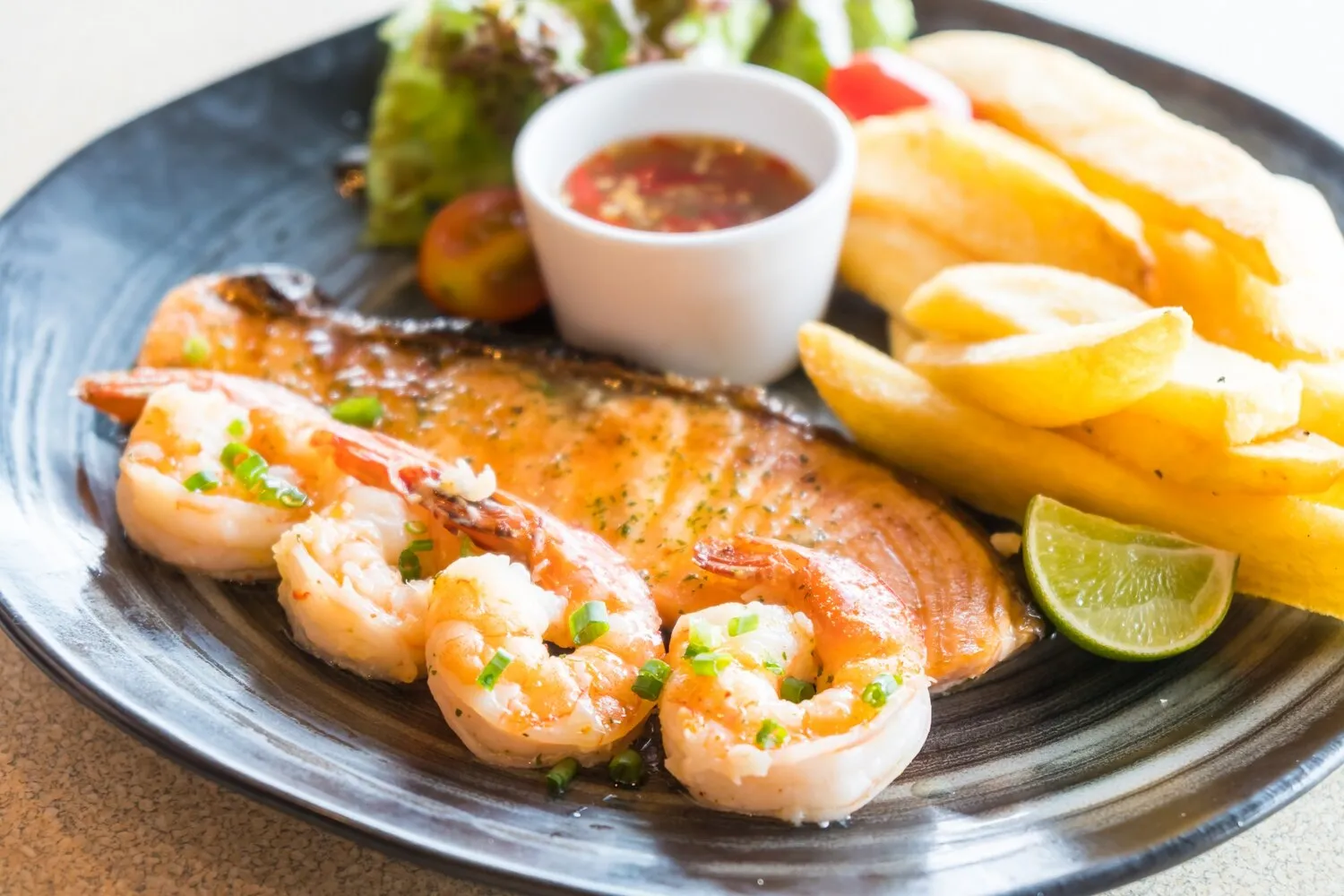
Seafood Dishes
Sapore Divino is known to serve seafood dishes. Specific names of dishes are unavailable, so this represents the general type of cuisine.
Nutrition Facts
* The % Daily Value (DV) tells you how much a nutrient in a serving of food contributes to a daily diet. 2,000 calories a day is used for general nutrition advice.
Italian seafood dishes have a rich history influenced by the country's extensive coastline and interactions with various cultures throughout the Mediterranean. Roman cuisine featured seafood prominently, and subsequent centuries saw regional variations develop based on available ingredients and cooking techniques inherited and adapted from Greek, Arab, and Norman influences.
Seafood holds a significant place in Italian culinary culture, particularly in coastal regions where it's an integral part of daily life and festive celebrations.
Regional Variations
Each coastal region boasts its unique seafood specialties. Sicily is known for its swordfish and tuna preparations, while Venice features dishes with clams and cuttlefish ink. Liguria incorporates pesto and local herbs into seafood dishes. Campania showcases seafood paired with tomatoes and pasta.
Festive Celebrations
Seafood plays a crucial role in Italian holiday meals, especially 'La Vigilia' (Christmas Eve), where a multi-course seafood feast is traditionally served. It is also featured during Easter and other significant celebrations, showcasing the diversity and abundance of the Italian coastline.
Freshness and Quality
Italians place a high value on the freshness and quality of seafood. Markets often display the day's catch, and chefs prioritize sourcing local, seasonal seafood to ensure the best possible flavor and texture.
Italian seafood dishes are known for their fresh, vibrant flavors, often highlighting the natural taste of the seafood itself.
Key flavor components include garlic, olive oil, lemon, parsley, chili flakes, white wine, and tomatoes. Depending on the region, you might encounter the use of fennel, oregano, basil, capers, olives, or anchovies to enhance the overall flavor profile. Dishes typically avoid heavy sauces to allow the delicate flavors of the seafood to shine. Fresh herbs are crucial for adding brightness and aromatics.
Use High-Quality Ingredients
The quality of the seafood and olive oil will significantly impact the final result. Opt for the freshest seafood you can find and use good-quality extra virgin olive oil.
Don't Overcook the Seafood
Seafood cooks quickly and becomes tough if overcooked. Aim for a slightly undercooked consistency, as it will continue to cook slightly off the heat.
Season Generously
Don't be afraid to season the seafood generously with salt, pepper, and herbs. Taste as you go and adjust seasonings as needed.
Simplicity is Key
Italian seafood dishes often rely on simple preparations to highlight the natural flavors of the ingredients. Avoid overcomplicating the dish with too many ingredients or heavy sauces.
Explore additional Seafood dishes and restaurants
Explore SeafoodDiscover top dining spots and culinary experiences in Messina.
Explore MessinaLearn more about the food culture, restaurant scene, and culinary heritage of Italy.
Explore Italy